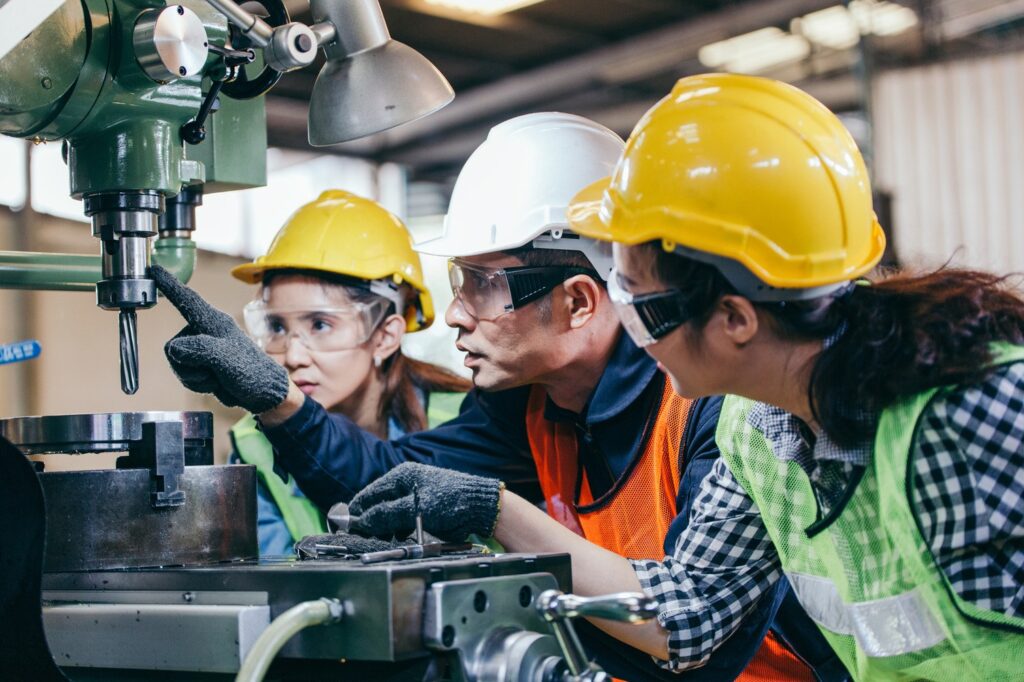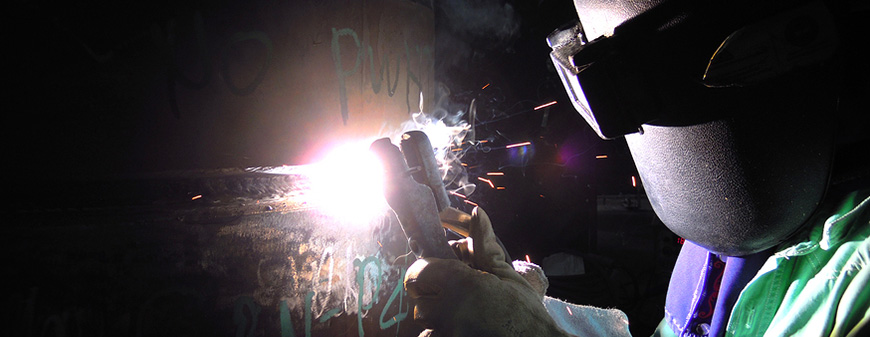TWS Jacksonville is a Great Training Option for Everyone
Learn more about how we can prepare you to advance your career.
The Occupational Safety and Health Administration (OSHA) has developed rules and regulations for workplace safety for virtually all industries and professions.
Since welding can expose workers to some risky situations, such as sparks or fumes, it’s no wonder OSHA provides various safety guidelines for welders and other skilled trade workers in the welding industry to prevent injuries and accidents.
What Is OSHA?
OSHA is a division of the United States Department of Labor and is led by the OSHA administrator. The administrator is appointed by the Secretary of Labor, who is part of the President’s cabinet.
OSHA was established by the Occupational Safety and Health Act of 1970. Congress passed the legislation in order to set and enforce workplace standards, ensuring safe and healthy work environments. OSHA also provides training, outreach, education and assistance to employers and employees so that they can minimize hazards and risks in the workplace.[1]
Have You Considered a Career in the Skilled Trades?
Fill out the form to recieve a no obligation info packet.
How does OSHA work?
OSHA rules apply to any organization that has at least one employee. These regulations typically pertain to a specific industry or occupation. We’ve broken down how OSHA works for different parties below.
Employees
Everybody who is employed by a business or any other organization is covered by OSHA.
For example, if you are employed by an automotive manufacturer as a welder, the manufacturer has to ensure that your working conditions are compliant with OSHA regulations.
Self-Employed Workers and Contractors
On the other hand, if you work as a self-employed welder and you were hired as a freelance contractor for the construction of a residential home, you are not covered by OSHA.
Employers
All employers are required to prominently display an OSHA-compliant poster that provides workers with information regarding their rights under OSHA.

New: Industrial Maintenance
Learn About Our New Advanced Industrial Maintenance Program
Tulsa Welding School is proud to announce our newest program offering available at our Houston & Dallas Metro Campuses – Advanced Industrial Maintenance Technology! Learn the skills you need to take on the industries of manufacturing, distribution, energy production and facility maintenance in as few as 7 months.
Employers must also inform employees about hazardous materials, exposure to pathogens and emergency procedures. If the organization has been employing more than ten people over the past year, they must file reports in the case of an injury or illness.
Federal and State Law
OSHA is a federal law, but some states have their own OSHA legislation. You can find out whether your state abides by federal or state OSHA law by looking up the OSHA-approved state plans.
If a state is not listed, it means that federal OSHA legislation applies.
Training
Employers must have an emergency action plan in place. They also have to provide an OSHA training program for all employees.
If the number of employees is below ten, however, this plan may be just communicated orally. If the organization employs more than ten people, the plan has to be written out and prominently displayed in the workplace for employee review.
The training program must cover how to handle hazardous substances, pathogens, emergencies and OSHA inspections.[2]
OSHA and Welding

Welders work with electricity, heat and chemicals. In some cases, they may also operate during inclement weather, in confined spaces or in elevated areas.
Students enrolled in our welding training program learn about safety measures to protect themselves. Still, it is helpful for aspiring welding professionals to know how OSHA regulates work conditions for welding safety specifically.
Eye Protection
Eye protection is extremely important in this industry. The radiant energy the welding arc gives off can injure a welder’s eyes. Welders must wear personal protective equipment (PPE) like safety glasses, goggles, welding helmets or welding face shields.[3]
Hazardous Fumes and Gases
Melting metal during the welding process produces smoke that contains harmful metal fumes and gas by-products. PPE, clean work surfaces and ventilation prevent inhalation.[4]
Arc Welding
A correctly installed and used arc welder is perfectly safe, but if it’s improperly operated, it can result in a number of hazards, including fires and radiation.[5]
Confined Spaces
A confined space can, for instance, increase the risk of being exposed to hazardous fumes or gases, a result of the lack of ventilation.[6]
Fire Safety
Welders work with extremely high temperatures. Sparks and spatter from the welding process look cool, but they can also pose a fire hazard.[7]
Welding is a rewarding job for those who like to work with their hands and receive satisfaction from seeing the result of their labor immediately. It can be risky, however, if the correct safety precautions are not taken.
Welders who are highly trained can reduce the risk of welding accidents. OSHA ensures that employers follow safety procedures, allowing welders to perform their job safely and effectively.
Welding is fun, but it can also be dangerous. It’s important to always know what you’re getting yourself into and how to be safe. Learn more about welding safety standards.
[1] https://www.osha.gov/about.html
[2] https://www.thebalance.com/what-is-osha-what-do-employers-need-to-know-about-it-398385
[3] https://www.osha.gov/Publications/OSHAfactsheet-eyeprotection-during-welding.pdf
[4] https://www.osha.gov/Publications/OSHA_FS-3647_Welding.pdf
[5] http://nasdonline.org/1083/d000873/arc-welding-safety.html
[6] https://www.osha.gov/SLTC/confinedspaces/hazards_solutions.html
[7] http://www.lincolnelectric.com/en-us/support/welding-solutions/Pages/Five-potential-welding-safety-hazards.aspx
This blog has been labeled as archived as it may no longer contain the most up-to-date data. For a list of all current blog posts, please visit our blog homepage at https://www.tws.edu/blog/







